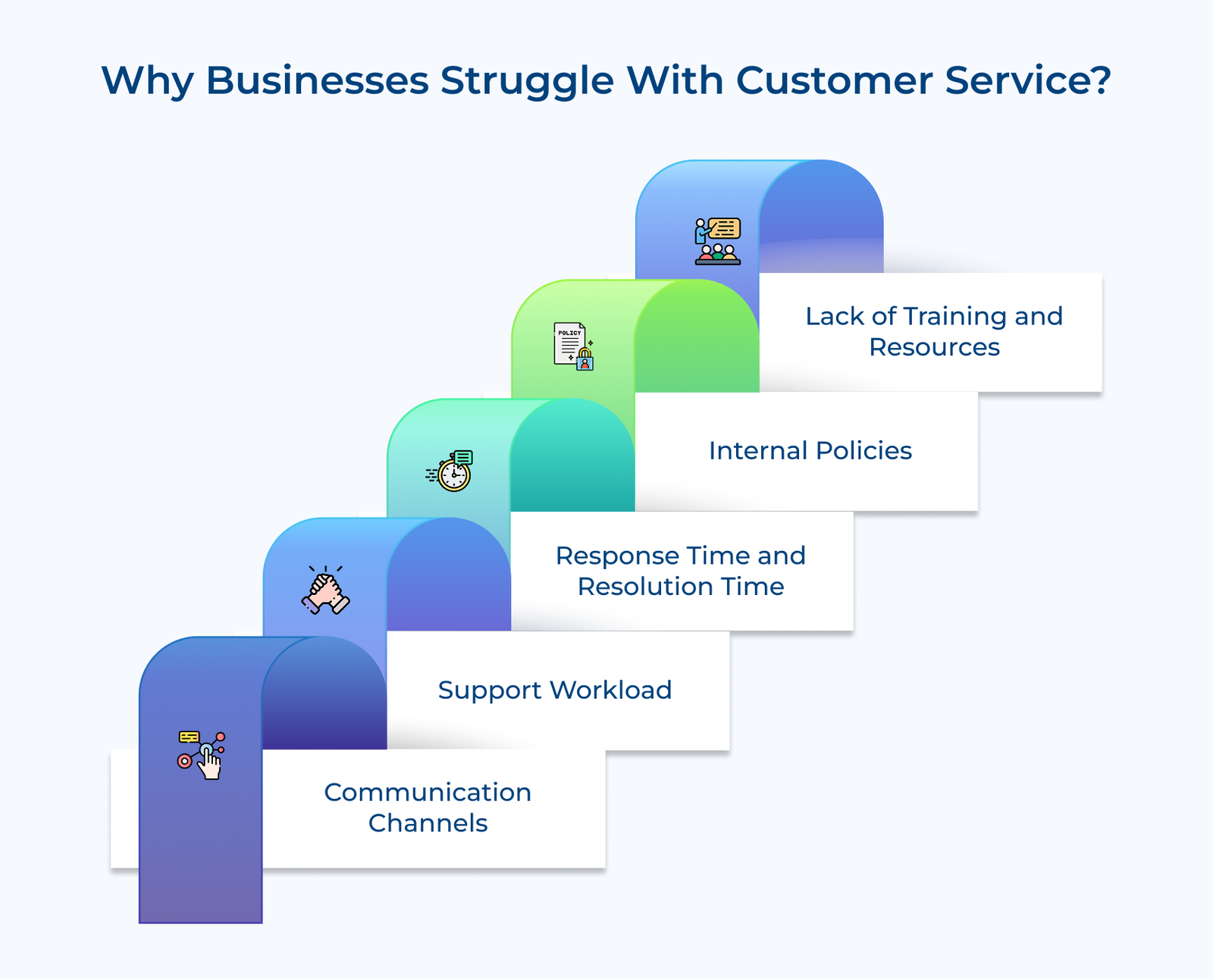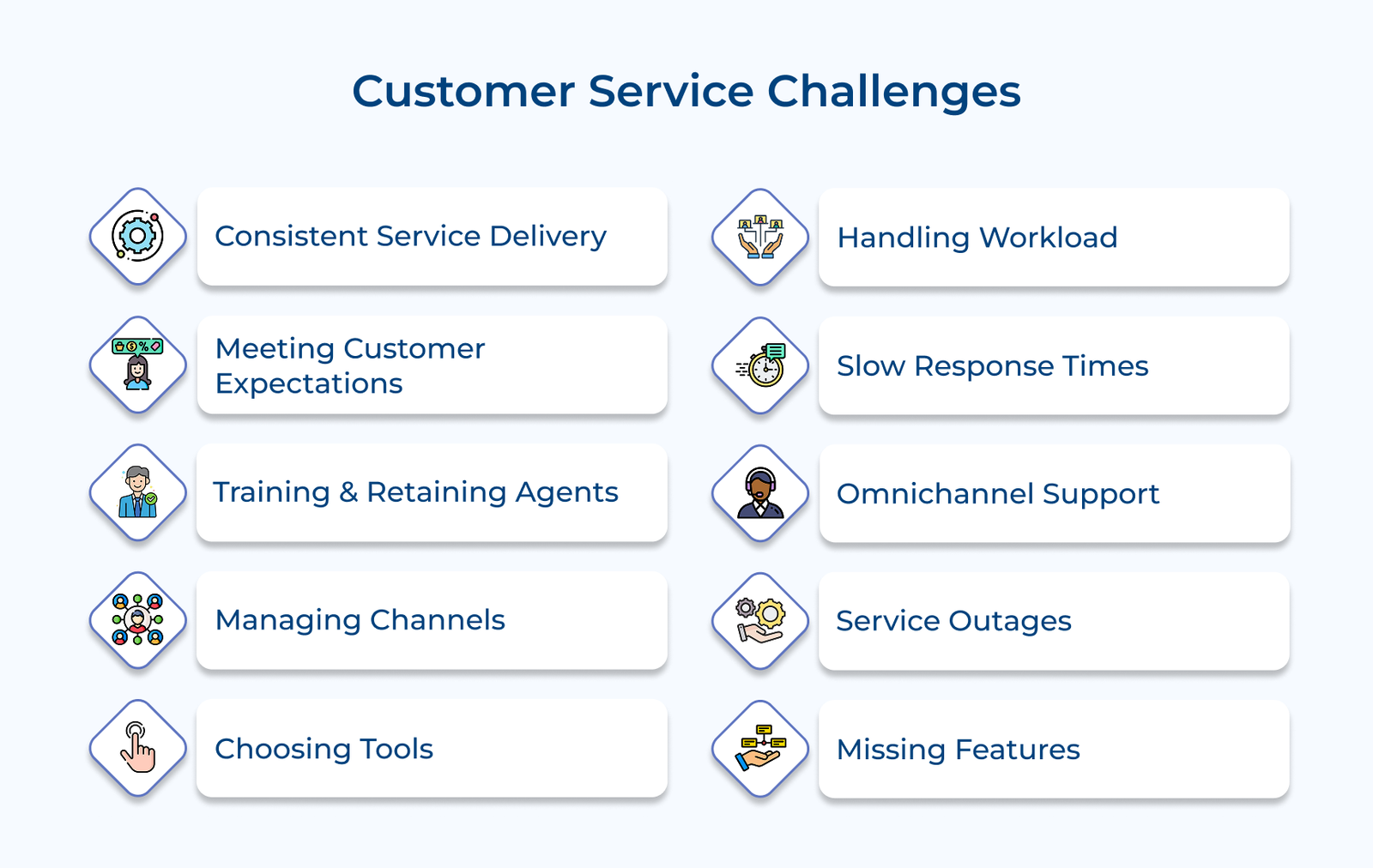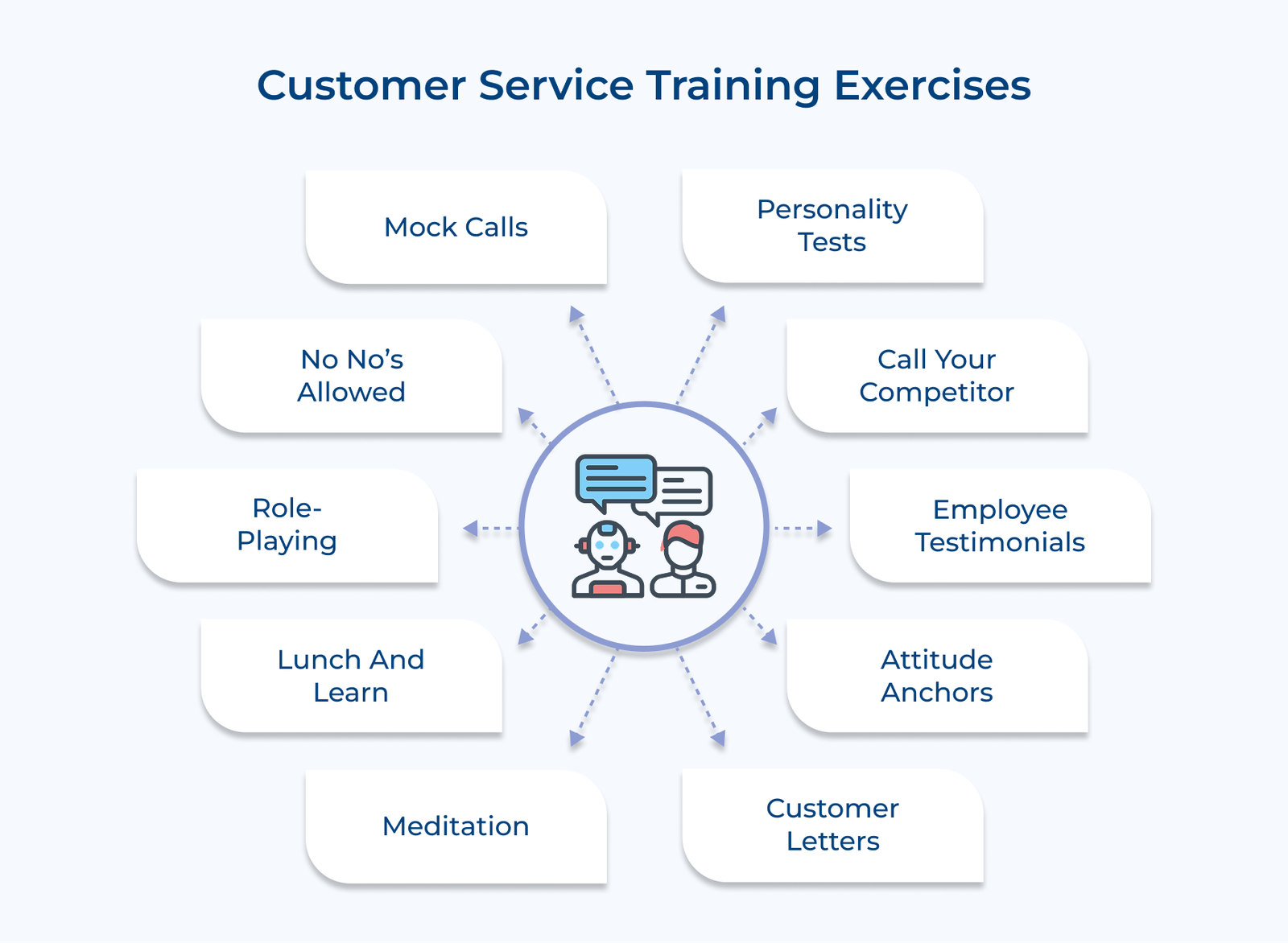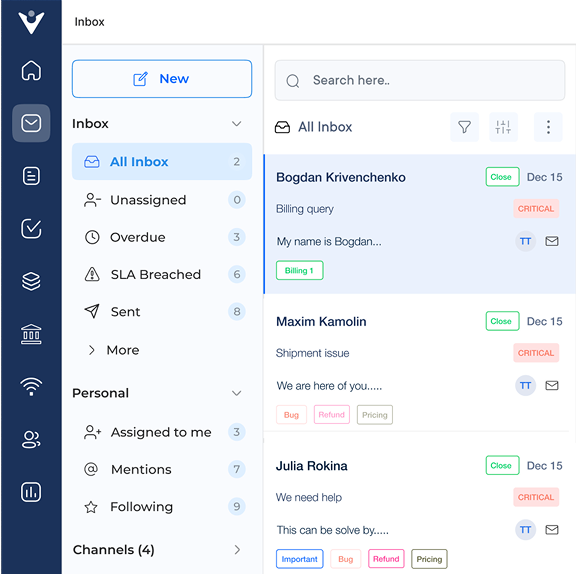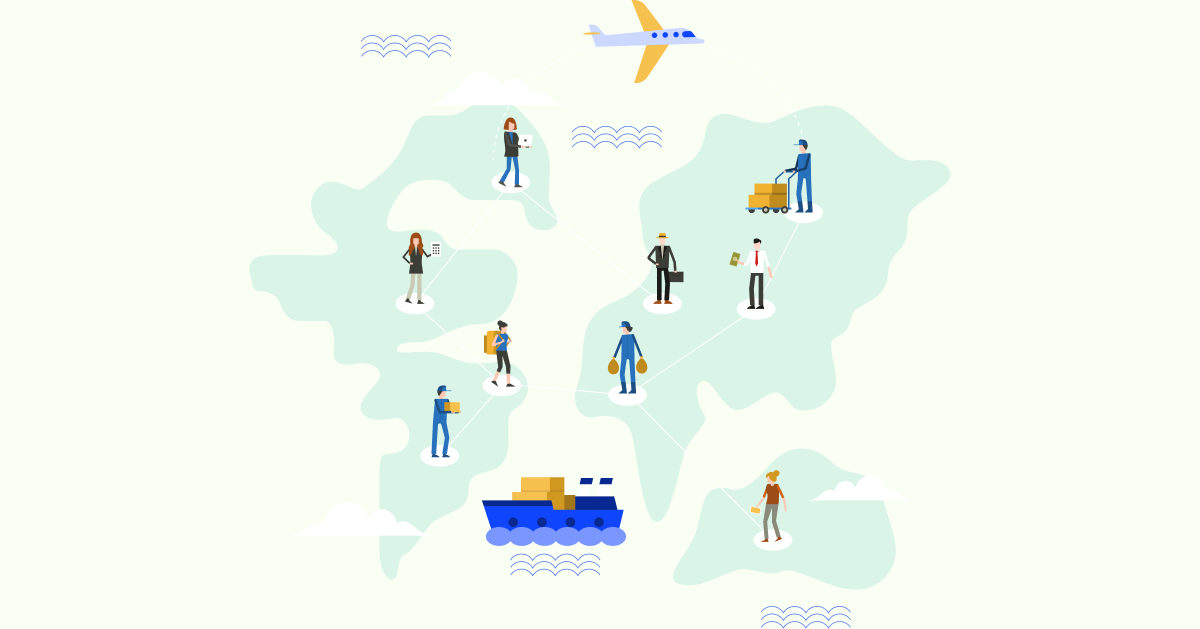The Impact:
Choosing the wrong platforms can lead to inefficient communication channels, increased wait times, and delayed responses, all affecting customer satisfaction levels. It can lead to a negative impression of your brand, causing customers to switch to competitors who provide better support.
The Solution:
Overcoming such an example of a customer service challenge requires businesses to evaluate their unique requirements and customer needs to choose the best tools. The evaluation should include factors such as the number of support requests, communication channels, and customer engagement software. They can be co-browsing, chatbots and live chat.
Businesses can also benefit from doing a demo of different platforms and getting feedback from their team before making a final decision. When making a final decision, businesses should consider the cost, integration with other systems, and user-friendliness of their chosen platform. It will ensure maximum efficiency and ROI.
Best Practices:
- Evaluate your unique business requirements to determine the necessary communication channels and customer engagement software that will suit your customers’ needs.
- Do a demo of different platforms and share the feedback with your team before finalizing a decision.
- Choose a platform that integrates with your current systems and is user-friendly to provide maximum efficiency.
Challenge 6: Managing Support Workload
One of the biggest customer support challenges is managing the high volume of inquiries and issues that require resolution in a timely manner. The impact of failing to manage the support workload effectively can lead to frustrated customers. It also results in lower satisfaction levels and loss of potential business.
The Solution:
Businesses need to prioritize tickets based on urgency and complexity. The tickets should be assigned to the appropriate agents for efficient service delivery. Ticket categorization and assignment can be automated using ticketing systems that can scale to meet the demands of growing businesses. The use of chatbots or email templates can help automate routine tasks and free up time for agents to focus on more complex issues.
Effective communication between support team members is crucial in ensuring efficient ticket resolution. A shared inbox that allows team members to collaborate on issues can ensure that no ticket falls through the cracks. While easy access to historical data can lead to quicker resolution times for recurring issues.
Best Practices:
- Prioritize tickets based on urgency and complexity, assigning them to the appropriate agents to ensure effective handling.
- Automate routine tasks with chatbots or email templates to reduce the load on agents.
- Streamline communication within the support team using a shared inbox or collaboration software to ensure efficient ticket resolution.
Challenge 7: Slower Response & Resolution Times
Customers expect fast and efficient service without compromise. One of the major customer service challenges faced in all industries is managing response and resolution times. Slow response or resolution times can lead to unhappy customers, lower satisfaction rates and even loss of business.
The Impact:
When customers reach out for support, slow response and resolution times can make them feel undervalued or dissatisfied with the service received. It can lead to negative word-of-mouth and poor ratings, which can have a significant impact on a business’s reputation. The longer it takes to resolve an issue, the more frustrated the customer becomes. The more likely such customers are to take their business elsewhere.
The Solution:
Overcoming this challenge is feasible when businesses adopt a multi-pronged approach. The approach should be focused on speed and efficiency without compromising quality. Increasing the number of support employees can help handle the influx of inquiries. While prioritizing response times as a key performance indicator can encourage team members to work towards a faster resolution.
Adding live chat services can also help reduce response times significantly. Customers can receive immediate assistance, and the support team can handle multiple chats simultaneously.
Introducing various technologies can be effective in enhancing team efficiency. Workflow management software can streamline the support process and help prioritize tickets. Knowledge bases can serve as a central repository of information. The self-service base will enable support teams to quickly access relevant information and resolve issues more efficiently.
Best Practices:
- Set response and resolution time targets. Prioritize tickets based on urgency and complexity, with a focus on quick resolution times.
- Use live chat services to provide customers with an immediate response. Ensure the chat support is easily accessible on the website and ensure prompt responses to customer inquiries.
- Utilize technology such as workflow management software to increase team efficiency and streamline support processes.
Challenge 8: Providing Omnichannel Customer Support
The audience expects businesses to respond promptly and provide support through channels of their choice. The customer service issue for businesses is to deliver personalized support across multiple communication channels and devices. Such customer support challenges are known as providing omnichannel customer support.
The Impact:
Customers prefer convenience and flexibility when it comes to accessing customer support. If businesses fail to provide this convenience, they risk losing customers to competitors.
Customers who face difficulty reaching support teams across multiple channels tend to be more dissatisfied and may leave negative reviews online. It can severely impact a business’s reputation and result in lost revenue. On the flip side, omnichannel customer experiences improve annual customer retention rates by 91%.
The Solution:
Companies facing this challenge should aim to provide a consistent customer experience across multiple touchpoints. Creating a unified platform that streamlines all forms of customer conversations can help to ensure a cohesive and personalized experience. The platform should integrate all communication channels. It should also provide agents with access to relevant information such as customer behavior, interests, and past interactions.
Another approach is to map out the customer journey and identify the channels that are the most preferred by customers. Being active on these channels 24×7 can help businesses address customer concerns quickly. Companies will be able to reduce the average response time and elevate customer satisfaction levels.
Engagement tools such as live chat, chatbots and a knowledge management (KM) platform can help to deliver first contact resolution efficiently. A KM platform equips support agents with the necessary information about a product or service. It ensures they can troubleshoot issues and provide timely solutions.
Best Practices:
- Map out the customer journey and identify the preferred communication channels of specific customer segments.
- Integrate all communication channels into a unified platform and provide agents with access to relevant information about customers.
- Use engagement tools to deliver quick and efficient solutions.
Challenge 9: Dealing With Service Outage Crisis
Service outages are inevitable as they occur due to system failures, natural disasters and cyber threats. The challenge for businesses is how to deal with such crises while minimizing the impact on customers. Service outages can lead to dissatisfied customers and harm a business’s reputation.
The Impact:
Service outages affect customer satisfaction and trust in a business. During the outage, customers are unable to access the service or product. It leads to frustration and dissatisfaction amongst the masses.
Social media has made it easier for customers to complain about an outage. If a company fails to handle it properly, negative feedback can harm its credibility. The amount of lost revenue and the possible long-term customer attrition depends on how severe the outage is.
The Solution:
The solution to this challenge is to have a crisis communication plan in place to mitigate the effects of the outage. The crisis communication plan should provide guidance to employees on what needs to be done during an outage. At the minimum, the plan should include the types of service outages that the business expects to encounter, the steps the business will take to fix the problem, and the timeline for the restoration of services.
Pro tips:
- Have a crisis communication plan in place that advises employees on what needs to be done in the event of an outage.
- Apologize to customers and update them regularly on the situation’s progress. It will reassure customers that everything possible is being done to resolve the issue.
- Be honest about the situation, even if you don’t know how and when it will be resolved. Refrain from making false promises or over-promising solutions that cannot be delivered.
Challenge 10: Customers Want Features You Don’t Have or Can’t Deliver
The majority of the target audience expects businesses to offer products or services that exceed their expectations. While businesses may strive to meet such demands, at times, customers may request features that a business doesn’t have or can’t deliver. Such customer service problems challenge can lead to disappointment and frustration. It can even drive existing and potential customers away.
The Impact:
When customers make a request for a product feature that businesses can’t deliver, it can lead to dissatisfaction. They may feel their needs aren’t being met. It can potentially harm the business’s reputation and lead to a decline in customer satisfaction. If customers perceive the business as unresponsive to their needs, they may take their business elsewhere. All of it only leads to a decline in sales and revenue.
The Solution:
One way to overcome this challenge is to respond to customers in a positive, personal tone, acknowledging their requests. If necessary, the team can ask for more details. If the feature cannot be delivered, make sure to inform them. If possible, suggest them an alternative solution. The alternative solution could be offering a similar product with a different feature or providing a discount on another product.
Best Practices:
- Respond to customers promptly and listen carefully to their requests. Ask them for more details to clarify if necessary.
- Use a positive and personal tone in your response, empathizing with the customer’s needs. Clearly explain why you can’t deliver the requested feature.
- Offer an alternative solution that meets the customer’s needs to the best of your ability. Provide options that align with your business’s offerings.
Challenge 11: Disorganized Internal Policies & Procedures
Disorganized internal policies and procedures can present a significant challenge to delivering consistent customer service. Businesses that struggle with the issue may find that their customer service representatives are ill-equipped to handle customer inquiries and requests.
The disorganized process leads to frustration and dissatisfaction among customers. Disorganized policies or procedures can result in confusion and mistakes. Such scenarios cause even more damage to the customer experience.
The Impact:
When internal policies are disorganized, it can lead to inconsistent customer service experiences and lower customer satisfaction. It can harm a company’s reputation and result in lost business opportunities. Inconsistencies in service may lead to customer complaints or negative reviews. It further damages a business’s reputation and ability to attract new customers.
The Solution:
Companies must prioritize properly organizing their internal policies and procedures. One solution is to clearly define the roles and responsibilities of customer service reps. It ensures they are well-prepared to handle a variety of customer inquiries. Implementing a standard operating procedure (SOP) for each type of customer issue can provide a consistent framework for employees to follow. Teams will be able to handle customer inquiries quickly and efficiently.
We recommend that companies regularly review and update policies to ensure they reflect current business practices. Proper training is also crucial to assist employees in understanding and executing these processes effectively. Making resources and documentation readily available for reference, ensures the customer service reps have the tools they need to deliver consistent service.
Best Practices:
- Define roles and responsibilities for customer service representatives to ensure that expectations are clear. Every employee should know what is expected of them.
- Implement a standard operating procedure based on different types of customer inquiries to provide a consistent framework for customer service representatives to follow.
- Regularly update policies and procedures to ensure they reflect current business practices.
Deliver Great CX by Resolving Customer Service Challenges
Businesses need to address common challenges faced in customer service in order to deliver great CX. Disorganized internal policies can affect the consistency of service and result in negative experiences for customers. Communication challenges such as delayed responses or a lack of a knowledge base can lead to dissatisfied customers. Businesses must take proactive measures to set clear policies, build a strong customer service team, and employ proactive communication methods.
Delivering great CX through efficient customer service is vital for building and retaining customer loyalty. It’s also crucial for a positive reputation and increased business opportunities. Addressing customer service challenges with practical solutions allows businesses to enhance the customer experience and facilitate long-term customer relationships.






